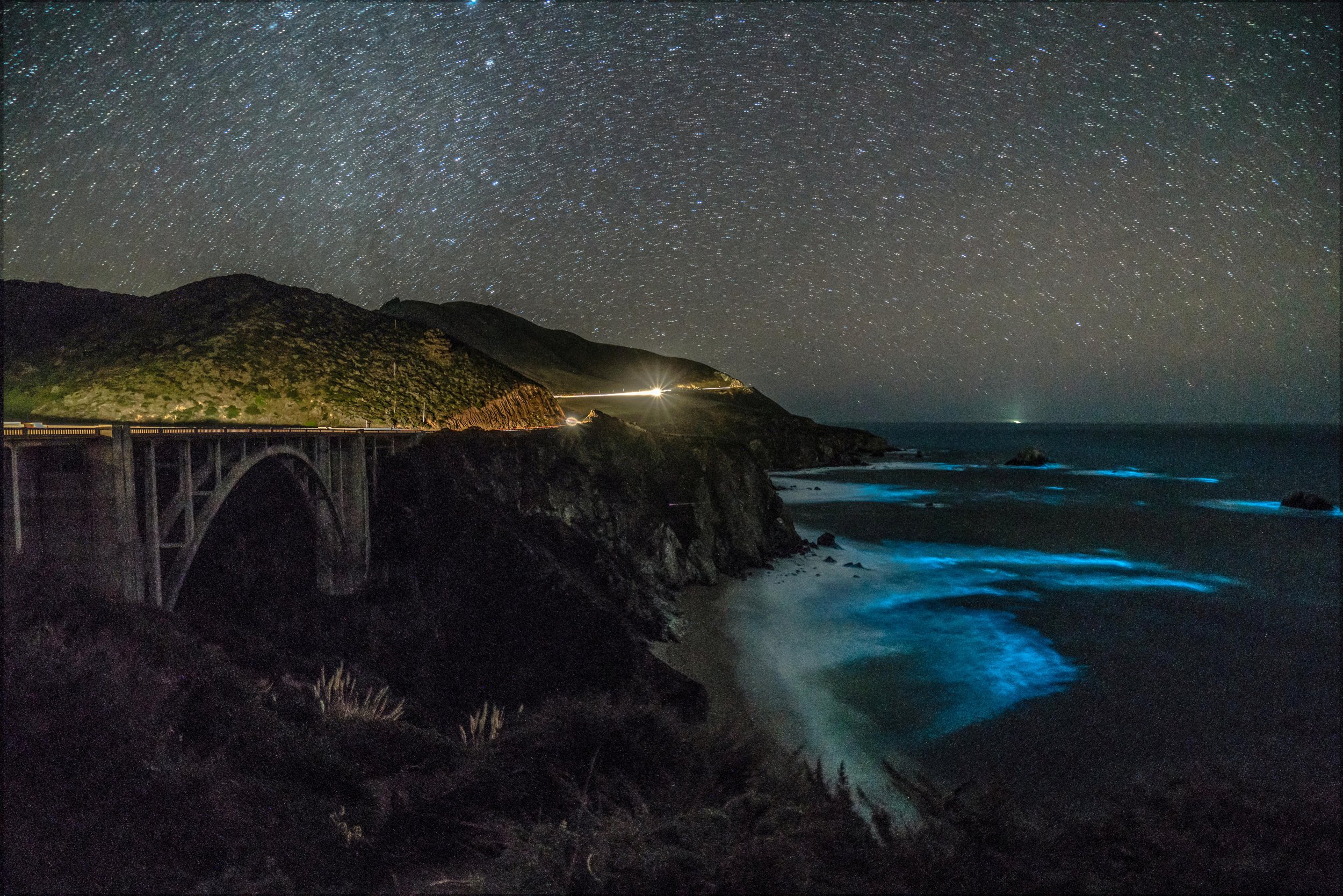
New stamps from the U.S. Postal Service are commemorating one of the niftiest tricks life has ever dreamed up: bioluminescence, the ability to produce light. The stamps, which will be available on February 22, include images of eight different marine critters, plus fireflies and mushrooms.
Bioluminescence is a surprisingly common talent, particularly for marine life—one recent study that pored over 17 years' worth of video footage of 350,000 individual underwater organisms at a site near California found that about three-quarters of the critters could create light. It tends to become more common as you move deeper into the ocean, where sunlight is scarcer.
Typically, organisms that can bioluminesce do so by producing a compound called luciferin. When luciferin meets oxygen, fireworks result. Other animals outsource the hard work, playing host to bacterial roommates that take care of the lights for them.
But why? Different animals use bioluminescence for different purposes—from luring in hapless critters to turn into dinner, to startling animals that might be out looking for their own snacks, to catching the attention of a potential mate.
Firefly luminescence has been particularly well studied, since the insects themselves are so intriguing (and don't require a deepsea submersible to study). Even still, piecing together every detail of what's happening inside these bugs took decades, making their place in the stamp set seem particularly well earned.
The other stamp honorees are less likely to have caught your eye. One is a fungus called Mycena lucentipes, which lives in Brazil—but this and other bioluminescent fungi are special in that they actually produce light constantly, rather than intermittently. The remaining eight all stick to the oceans, including a few different species of jellyfish and marine worm, an octopus and a coral.
Read more: Do All Animals Sleep? Brainless Jellyfish Still Need Rest, Study Finds
As a special touch, according to the Palm Beach Post, the new stamps are using special hologram technology to mimic movement by reflecting light off the stamp.
The stamps will go on sale on Thursday and come in sheets of 20 for $10 to match the current postage price of 50 cents. But they are forever stamps, so they'll never go out of style—just like bioluminescence itself.
Uncommon Knowledge
Newsweek is committed to challenging conventional wisdom and finding connections in the search for common ground.
Newsweek is committed to challenging conventional wisdom and finding connections in the search for common ground.
About the writer
Meghan Bartels is a science journalist based in New York City who covers the science happening on the surface of ... Read more
To read how Newsweek uses AI as a newsroom tool, Click here.








